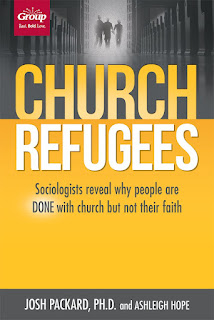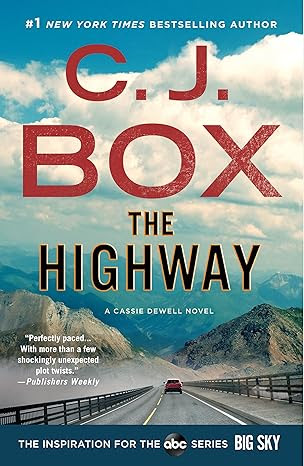Liberal Fascism: The Secret History of the American Left, From Mussolini to the Politics of Meaning by Jonah Goldberg
An Impressive Amount of Research
Published in 2208.
According to Goldberg, the traditional left-right concept of political beliefs is incorrect. Understanding this is key to understanding Goldberg's thesis that modern liberalism is the intellectual heir to Rousseau's ideas, the French Revolution and is, at the very least, the intellectual cousin to both fascism (especially Italian Fascism) and Soviet Communism.
To fully understand this you have to understand that measuring political philosophy with a one-dimensional left-right line lack the depth to measure both social and economic political philosophies. A quadrant map used to measure political beliefs will more accurately show depth of support for government involvement in economic issues, political rights and social issues. Anarchists lie at the edge of one quadrant, Libertarians a little more toward the center of that same quadrant but totalitarians lie in the opposite corner. Search the web to discover more about the grid concept for yourself.
Knowing this and actually knowing the stated goals of the fascist states (not including the racial discrimination of the Nazis), one can easily see that those goals are more in line with those of modern liberals and not with those of the Right, despite the popular belief that Fascists are nothing more than extreme Conservatives.
On the political grid, one can see that Fascists and Communists are really nearly the same thing, or at the very least political cousins of one another. They are both Totalitarians. Totalitarianism it the opposite of the Enlightenment philosophies that America was founded upon (see John Locke) and they are the opposite of the views of Classical Liberals.
Goldberg's thesis in Liberal Fascism: The Secret History of the American Left, From Mussolini to the Politics of Meaning is that modern liberals are not Adolph Hitler death camp fascists. Rather, they are akin to Mussolini's pre-World War II vision of fascism. Goldberg likens Mussolini's fascism to being very masculine and he likens modern liberalism to being more of an "eat your vegetables" nanny-state style of fascism, a more feminine model, if you will. Not classic Totalitarianism, but with clear Totalitarian features. The government is getting more and more involved in your daily life. The government tells you cannot smoke in your own business (Indianapolis), the type of grease you can cook with (New York City) and what types of grocery bags you can use (San Francisco).
None of those things belongs in the realm of government in the view of Classical Liberalism, which is more concerned about protecting you from government intervention, not in protecting you from yourself. While a nanny state is clearly not a Totalitarian state, it also is clearly closer to fascism on the quadrant grid than it is to classical liberalism.
Goldberg uses an impressive array of quotes and sources to back up his arguments. Goldberg is not afraid to go after Republicans as well. He's not happy with Karl Rove or George W. Bush for their own fascist tendencies. Mind you, his complaints are not those that the hyperbolic bloggers on the Left obsess over. He is bothered by the faith-based initiatives and the tremendous reach of No Child Left Behind into areas that were once left to local and state government.
Liberal Fascism is often dense reading, more like a political science textbook than the typical political stuff put out by partisans like Michael Moore, Ann Coulter and Sean Hannity. A strong working knowledge of political philosophy and political science vocabulary is a must with this book.
Goldberg provided tons of endnotes to document his work which is a strength and indicative of the quality of work that he has created. It was also quite annoying. Not the notes themselves, but the fact that they were endnotes with commentary requiring the reader to constantly flip back and forth to the end of the book and to keep two sets of bookmarks- one for the text and one for the endnotes. If a writer plans to write additional commentary in his or her notes common decency would suggest that footnotes are better for the reader. The continuity and flow of the main text is not broken by constant flipping to the back of the book. Shelby Foote did this to great effect in his gigantic 3 volume Civil War series. Tom Holland uses both in his book "Rubicon" - notes at the end, additional commentary at the bottom of the text.
I rate this book 5 stars out of 5.
This book can be found on Amazon.com here: Liberal Fascism.
Reviewed on May 2, 2008.
To fully understand this you have to understand that measuring political philosophy with a one-dimensional left-right line lack the depth to measure both social and economic political philosophies. A quadrant map used to measure political beliefs will more accurately show depth of support for government involvement in economic issues, political rights and social issues. Anarchists lie at the edge of one quadrant, Libertarians a little more toward the center of that same quadrant but totalitarians lie in the opposite corner. Search the web to discover more about the grid concept for yourself.
Knowing this and actually knowing the stated goals of the fascist states (not including the racial discrimination of the Nazis), one can easily see that those goals are more in line with those of modern liberals and not with those of the Right, despite the popular belief that Fascists are nothing more than extreme Conservatives.
On the political grid, one can see that Fascists and Communists are really nearly the same thing, or at the very least political cousins of one another. They are both Totalitarians. Totalitarianism it the opposite of the Enlightenment philosophies that America was founded upon (see John Locke) and they are the opposite of the views of Classical Liberals.
Goldberg's thesis in Liberal Fascism: The Secret History of the American Left, From Mussolini to the Politics of Meaning is that modern liberals are not Adolph Hitler death camp fascists. Rather, they are akin to Mussolini's pre-World War II vision of fascism. Goldberg likens Mussolini's fascism to being very masculine and he likens modern liberalism to being more of an "eat your vegetables" nanny-state style of fascism, a more feminine model, if you will. Not classic Totalitarianism, but with clear Totalitarian features. The government is getting more and more involved in your daily life. The government tells you cannot smoke in your own business (Indianapolis), the type of grease you can cook with (New York City) and what types of grocery bags you can use (San Francisco).
None of those things belongs in the realm of government in the view of Classical Liberalism, which is more concerned about protecting you from government intervention, not in protecting you from yourself. While a nanny state is clearly not a Totalitarian state, it also is clearly closer to fascism on the quadrant grid than it is to classical liberalism.
Goldberg uses an impressive array of quotes and sources to back up his arguments. Goldberg is not afraid to go after Republicans as well. He's not happy with Karl Rove or George W. Bush for their own fascist tendencies. Mind you, his complaints are not those that the hyperbolic bloggers on the Left obsess over. He is bothered by the faith-based initiatives and the tremendous reach of No Child Left Behind into areas that were once left to local and state government.
Liberal Fascism is often dense reading, more like a political science textbook than the typical political stuff put out by partisans like Michael Moore, Ann Coulter and Sean Hannity. A strong working knowledge of political philosophy and political science vocabulary is a must with this book.
Goldberg provided tons of endnotes to document his work which is a strength and indicative of the quality of work that he has created. It was also quite annoying. Not the notes themselves, but the fact that they were endnotes with commentary requiring the reader to constantly flip back and forth to the end of the book and to keep two sets of bookmarks- one for the text and one for the endnotes. If a writer plans to write additional commentary in his or her notes common decency would suggest that footnotes are better for the reader. The continuity and flow of the main text is not broken by constant flipping to the back of the book. Shelby Foote did this to great effect in his gigantic 3 volume Civil War series. Tom Holland uses both in his book "Rubicon" - notes at the end, additional commentary at the bottom of the text.
I rate this book 5 stars out of 5.
This book can be found on Amazon.com here: Liberal Fascism.
Reviewed on May 2, 2008.











Comments
Post a Comment